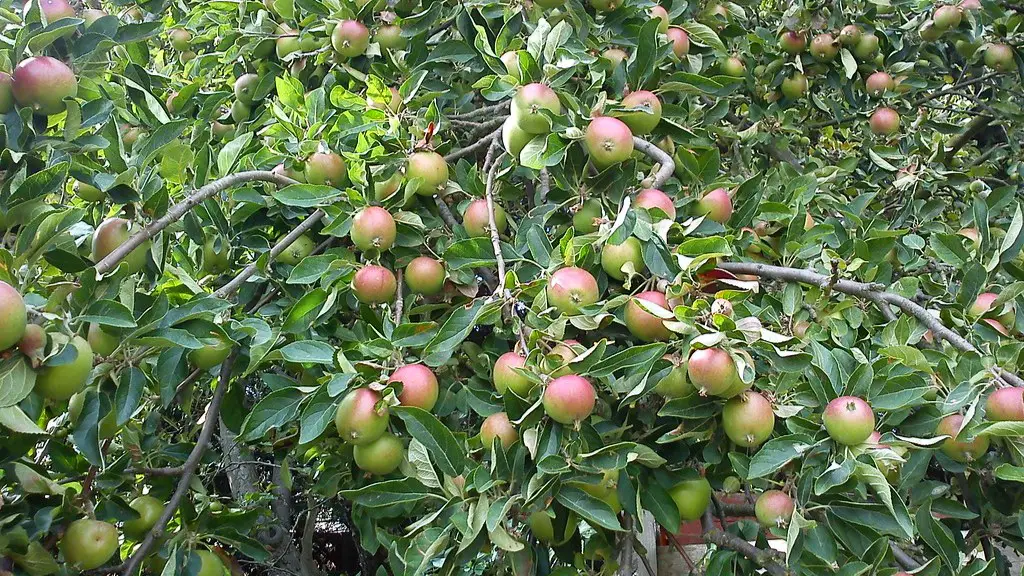Overview of Palm Tree Diseases
Palm tree diseases, caused by fungi, bacteria, viruses, and other organisms, can weaken and even kill trees. Treatment often is necessary to minimize damage caused by such diseases. However, successful treatment of palm tree diseases can be challenging due to the difficulty of gaining an accurate diagnosis, the multitude of potential treatments, and the need to consider environmental impact. Knowing what to do, when, and why can make the task easier.
Diagnosing the Problem
The first step in treating palm tree diseases is acquiring an accurate diagnosis. This is best accomplished through a visual inspection of the plant, aided by a trained professional. Knowing exactly what is wrong with the tree helps to inform the treatment plan.
Observing the symptomatic behavior of the tree is key: the location of the symptoms, their appearance and severity, and their pattern of spread all factor into the diagnostic process. Different fungi, viruses, and bacteria manifest in different ways, and a certified arborist or plant doctor can use these details to determine the cause.
Biopesticides as a Treatment Option
The use of biopesticides is rapidly gaining acceptance in the battle against palm tree diseases. Biopesticides are a type of pest control that introduces natural predators or antagonists of the disease-causing organism into the environment in order to control them.
Often, biopesticides are bacteria or fungi that produce toxins to kill the pathogen. They can also be predators that naturally self-regulate the population of the diseased organism. When sprayed onto plants, biopesticides can help minimise the effects of many palm tree diseases, while also having minimal environmental impact.
How to Apply Treatment
Once the diagnosis is made and the treatment selected, it must be carefully applied. Applied too broadly or too little, treatment can be ineffective and can also cause environmental damage. Treatments are available in liquid, granular, and powder form, and can be applied in a variety of ways. For example, a liquid spray could be used to treat leaves, while a granular fertilizer could be applied to the base of the plant. It is important to carefully follow the application instructions provided.
In the case of biopesticides, application is especially critical. It is important to apply the treatment at the correct rate and to target the flowers, leaves, and stems most affected by the disease. Regular follow-up applications may also be recommended, depending on the severity of the case. It is also important to note that biopesticides have to be reapplied more often than chemical pesticides.
Options for Disease Prevention
In addition to treating existing palm tree diseases, there are steps you can take to reduce the chances of them taking hold in the first place. Proper care and maintenance is critical: trees should get adequate nutrition, water, and sunlight. Pruning away any dead or infested leaves is also important. It is also important to pay attention to the environment, which includes the type of soil, wind and weather, and the presence of other nearby plants. Finally, regular monitoring should be conducted in order to identify any changes as early as possible.
Post-Treatment Care
Once the treatment has been applied, it is important to provide the tree with ongoing care to ensure the new growth is healthy and the disease does not return. A good start would be to irrigate the palm tree regularly and ensure ample nutrition by mulching the soil around it with organic material.
The use of compost tea can also help to promote strong, healthy growth while acting as a preventive measure against disease. Regular pruning of dead and diseased leaves and branches also helps to keep additional damage at bay. Finally, keeping the environment of the tree in mind is important and can help to further reduce the likelihood of a repeat occurrence.
Integrating Biologics into Treatment Protocols
Integrating biologics into treatment protocols for palm tree diseases has the potential to provide more effective and eco-friendly solutions. By incorporating select insects, fungi, and other organisms, biologics can augment the effectiveness of treatment plans while helping to minimize any adverse environmental impacts that result from chemical solutions.
Biologics can be applied directly to affected plants or to the soil themselves, which eliminates the risks associated with overspray and can provide a more targeted approach. Examples of biologics available for disease treatment include beneficial nematodes, insect-attacking fungi, and beneficial microorganisms that can promote better soil structures.
Applying biologics when treating diseases can also help to improve the health of other plants in the area. For example, introducing beneficial fungi can help to improve the soil structure and digestion of necessary nutrients, which can have a positive impact on the health of the surrounding flora.
Monitor the Affected Area
Careful monitoring of the affected area once the treatment has been applied is important. Regular inspection of the affected tree and surrounding soil can help to identify any changes in the situation. This is useful for determining if treatments are working as desired and whether or not adjustments need to be made.
As the plant recovers, branches and leaves should start to look healthier, and the affected area should be free of any discoloration, wilting, or other signs of deterioration. If such signs are still present, further adjustment to the treatment plan may be necessary. Signs of disease should also be monitored and reported to a trained professional as soon as they are observed.
Ensure Adequate Nutrition
Adequate nutrition is essential for the health of palm trees, especially after being affected by disease. To ensure proper nutrition, fertilizers tailored to the specific conditions of the environment can be used. Organic forms of fertilizer, such as compost tea, are generally preferred, as they are often more readily available to the tree, while also helping to improve soil structure and drainage.
The fertilizers should be applied at the base of the palms and surrounding soil. They should also be monitored on a regular basis and adjusted as necessary to ensure an appropriate balance of nutrients. Additionally, regular irrigation can help to ensure adequate moisture levels.
Research for Potential new Treatments
The past decade has brought many new advances in the area of palm tree diseases, with research giving rise to better approaches to control and treat diseases. As a result, it is important to stay up-to-date on the latest treatments and approaches through consulting professionals and by researching potential new treatments.
Recent advances in the use of biologics, for example, are allowing for more targeted, eco-friendly treatment solutions. Botanical and synthetic options are also available, and a variety of products are available for different types of palm tree diseases. Utilizing the latest advances in treatment technology is key for providing adequate and effective solutions.
Educate to Increase Awareness
The most effective way to treat and prevent palm tree diseases is by increasing awareness of best practices and by educating people on the various methods of treatment available. When people are aware of the various disease-causing organisms, and the ways they can be treated, they can take action to protect their trees.
Education and increased awareness can have a positive effect on the environment, as people can become champions of responsible and eco-friendly practices. Additionally, informing people of the natural biologics available can provide a safer, more effective choice of treatment when combating palm tree diseases.




